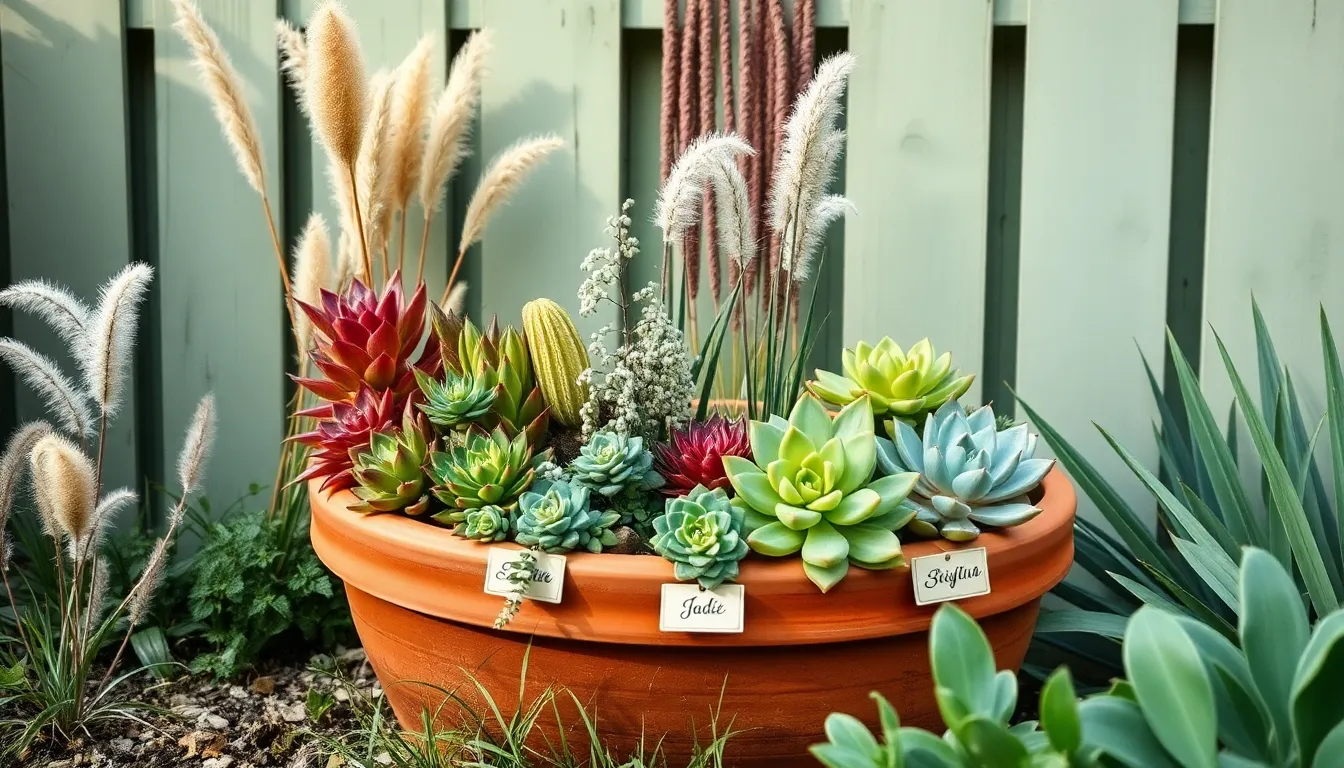Welcome to the delightful world of indoor gardening, where even the busiest among us can find solace and satisfaction in nurturing nature within our homes. Whether you’re a budding gardener just starting out or a seasoned green thumb looking to simplify, choosing low-maintenance plants can transform your space without overwhelming your schedule.
In this guide, we unveil a curated list of indoor plants that promise beauty and ease, making them perfect companions for any lifestyle. Discover how these resilient greens not only purify your air but also bring a touch of tranquility and joy to your living space. With our practical tips and insights, you’ll feel empowered to cultivate a thriving indoor garden, confident in your ability to watch your plants flourish with minimal effort. Embrace the rewards of successful gardening and let these easy-care plants bring a splash of greenery and happiness into your everyday life.
Opt for Drought-Tolerant Varieties
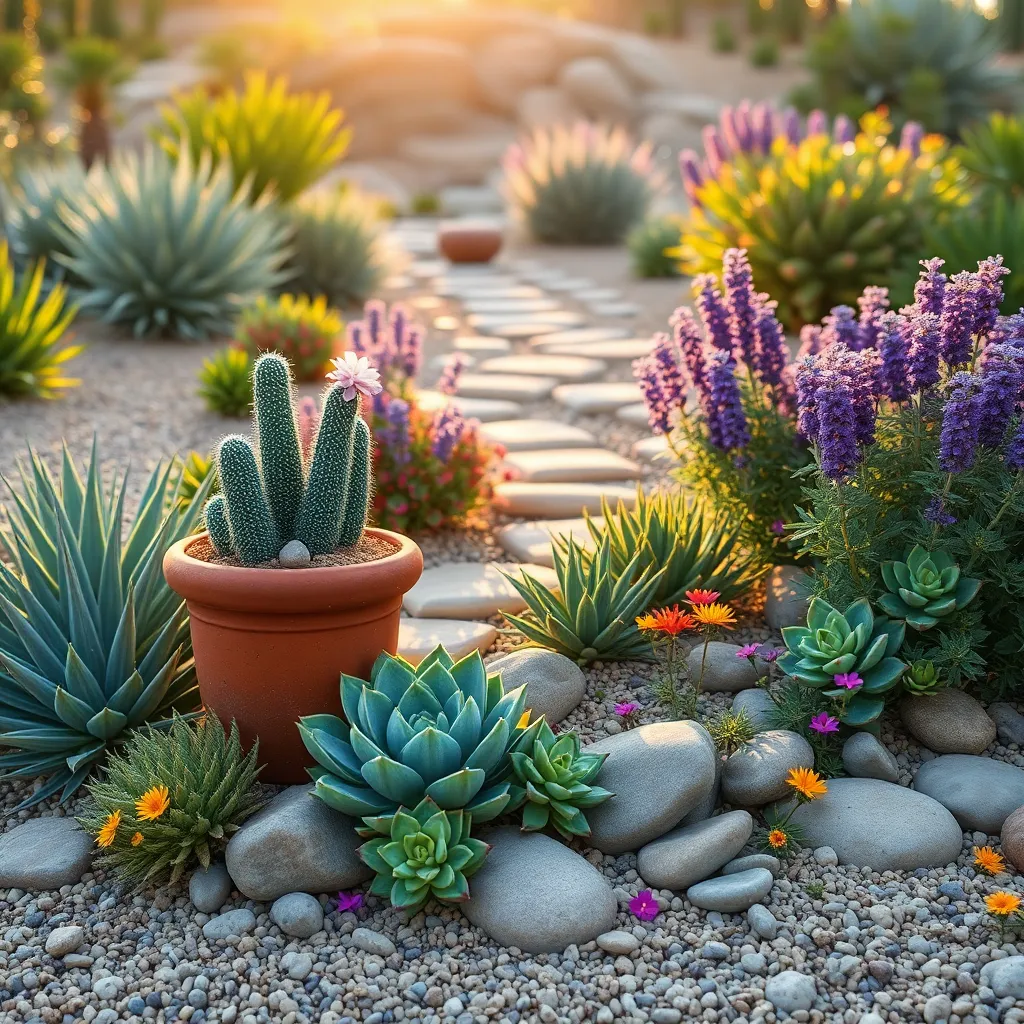
Choosing drought-tolerant plants is a smart way to maintain a beautiful garden with minimal water usage. These plants are not only resilient but also come in a variety of colors and textures to enhance your garden’s aesthetic appeal.
Consider planting lavender, yarrow, and sedum, which are excellent drought-tolerant options. These plants thrive in well-drained soil and can endure dry conditions once established, making them perfect for low-maintenance gardening.
It’s essential to prepare your soil properly to support these hardy varieties. Mixing in organic matter like compost will improve soil structure and help retain moisture, providing a better foundation for your drought-tolerant plants.
Advanced gardeners might explore xeriscaping techniques, which focus on landscaping with plants that require minimal irrigation. By grouping plants with similar water needs together, you can conserve water while ensuring each plant receives the care it requires.
Watering deeply but infrequently encourages deep root growth, which helps plants withstand dry spells. Aim to water your drought-tolerant garden early in the morning to reduce evaporation and allow plants to absorb moisture efficiently.
Select Native Plant Species
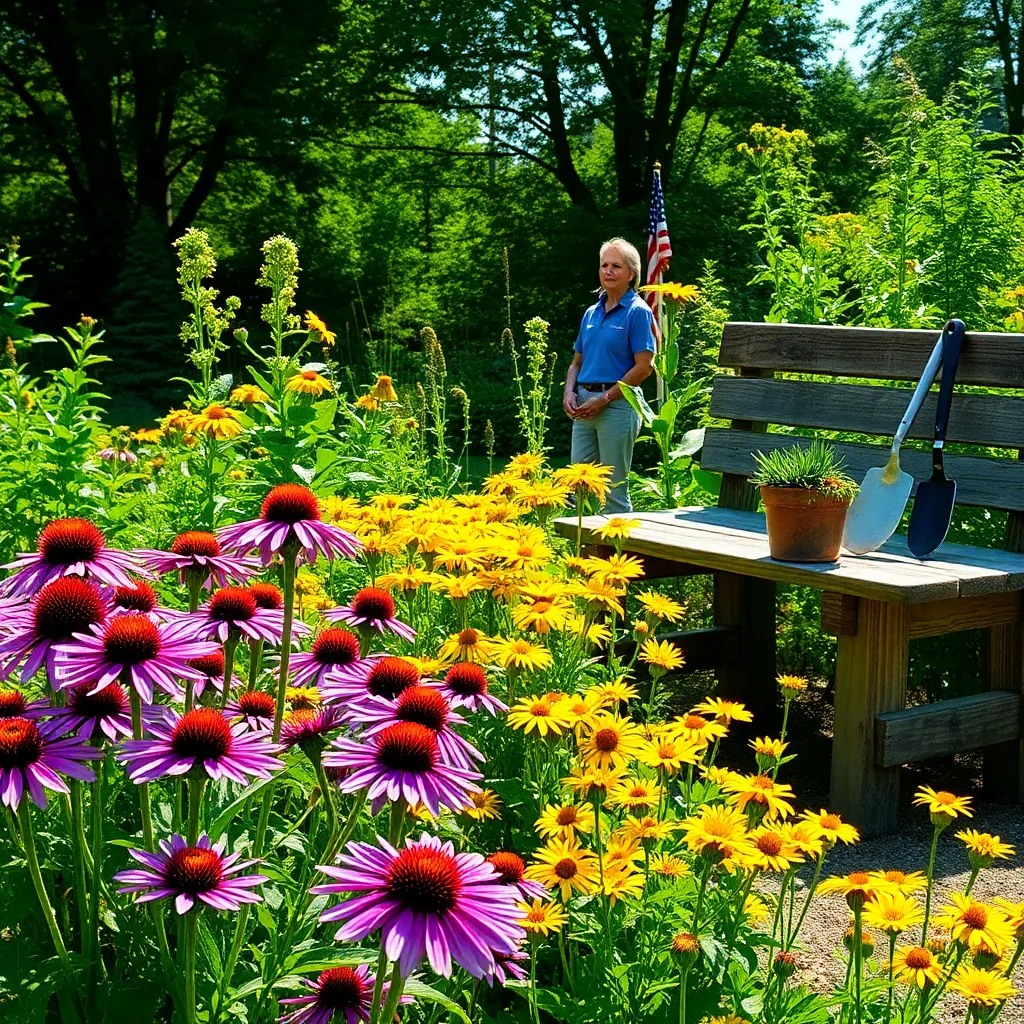
Selecting native plant species is an excellent way to ensure a low-maintenance garden. These plants are already adapted to your local climate and soil conditions, requiring less care and fewer resources.
Native plants are inherently resilient, often requiring less water and fertilizer than non-native species. For best results, choose plants that are native to your specific region and match their natural habitat conditions in your garden.
To enhance your garden’s sustainability, incorporate a mix of native grasses, shrubs, and flowering plants. This diversity not only supports local wildlife but also creates a balanced ecosystem that can fend off pests and diseases naturally.
When planting native species, pay attention to their specific sunlight and soil needs. For instance, some native wildflowers thrive in sandy, well-drained soils and full sun, making them ideal for sunny, dry spots in your landscape.
Choose Perennials Over Annuals

Choosing perennials over annuals can significantly reduce the amount of maintenance your garden requires. Perennials return year after year, eliminating the need to replant each season, which saves both time and effort.
Many perennials are well-suited to a variety of climates, making them a versatile choice for gardeners everywhere. Consider species such as daylilies, hostas, and coneflowers, which are known for their hardiness and low maintenance needs.
When planting perennials, pay attention to the specific soil and sunlight requirements of each plant. Most perennials thrive in well-draining soil and require at least six hours of sunlight daily, though some, like hostas, can flourish in shade.
Watering needs can vary, but generally, perennials need about one inch of water per week, including rainfall. In dry periods, supplement with deep watering once a week to encourage deep root growth, which enhances drought resistance.
Prioritize Pest-Resistant Plants
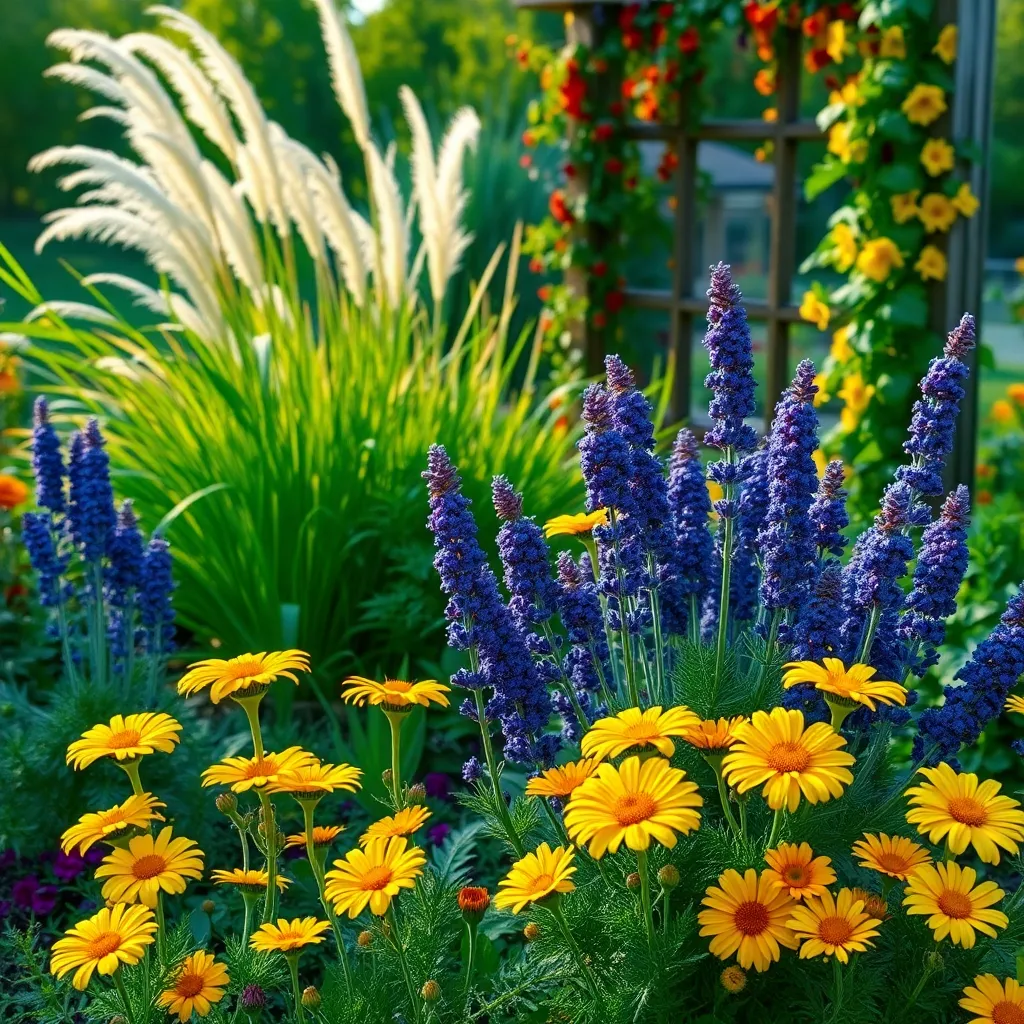
One of the easiest ways to reduce garden maintenance is to prioritize pest-resistant plants. Opt for varieties known for their natural resilience, such as marigolds, lavender, and rosemary, which not only deter pests but also add vibrant colors and fragrances to your garden.
Before planting, research the specific pests common in your area and choose plants that are naturally resistant to those threats. This proactive step can save you considerable time and effort on pest control measures, allowing you to enjoy your garden more.
For beginners, selecting pest-resistant plants simplifies the gardening process significantly. You avoid the frequent need for chemical pesticides, which can be both time-consuming and detrimental to the environment.
Experienced gardeners can take it a step further by interplanting pest-resistant species with more vulnerable plants. This creates a natural barrier, reducing the likelihood of infestations and fostering a balanced ecosystem.
To maximize the effectiveness of pest-resistant plants, ensure they are grown in ideal conditions. Consider factors like soil type, sun exposure, and watering needs; for instance, lavender thrives in well-drained, sandy soil with full sun exposure.
By incorporating these strategies, you not only enhance your garden’s resilience but also contribute to a healthier, more sustainable gardening practice. Embrace the natural defenses of pest-resistant plants and enjoy a flourishing garden with less effort.
Pick Slow-Growing Shrubs
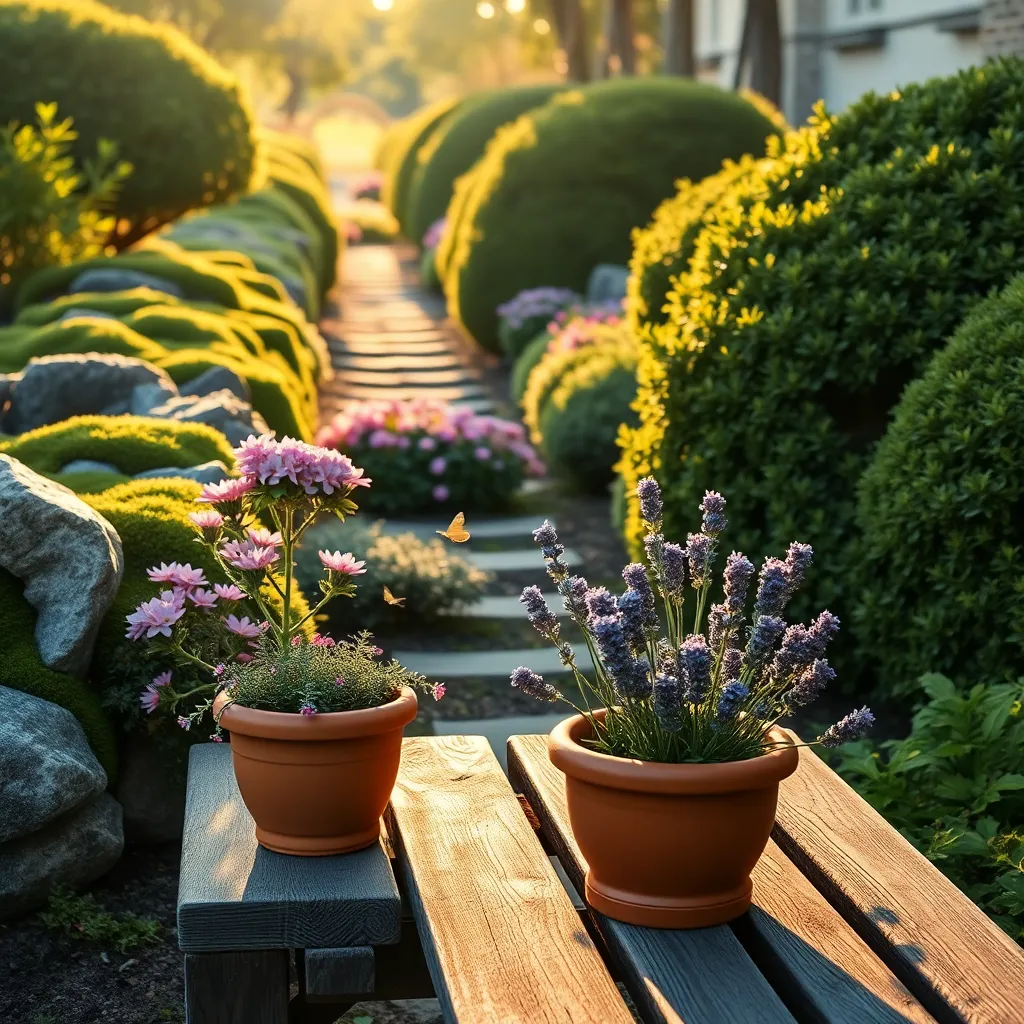
Slow-growing shrubs are an excellent choice for low-maintenance gardens, as they require less frequent pruning and upkeep. Consider selecting varieties like boxwood or dwarf Japanese holly, which are known for their compact growth habits and versatility in landscaping.
When planting slow-growing shrubs, it’s essential to choose the right location to maximize their growth potential. Ensure they are placed in well-draining soil and receive the appropriate amount of sunlight, typically full sun to partial shade depending on the species.
Watering is another crucial aspect to consider; slow-growing shrubs generally prefer consistent moisture without becoming waterlogged. A layer of mulch around the base of the plants can help retain soil moisture and regulate temperature, reducing the need for frequent watering.
For gardeners looking to add some variety, consider shrubs like the compact hydrangea or the dwarf lilac, which offer seasonal blooms with minimal care. Regularly check for pests and diseases, but rest assured that these hardy plants often resist common issues, making them a reliable choice for any gardener.
Conclusion: Growing Success with These Plants
In navigating the lush world of relationships, choosing low-maintenance plants can serve as a metaphor for cultivating connections that thrive with ease. We’ve explored five key concepts: understanding the importance of simplicity, recognizing the value of resilience in nurturing relationships, appreciating the role of consistency, prioritizing adaptability, and embracing growth with patience. These insights remind us that relationships, like plants, flourish when given the right environment and care without overwhelming demands.
As a next step, consider assessing your current relationships and identifying areas where you can simplify interactions while maintaining quality and depth. This reflection will help you create a nurturing atmosphere where both parties feel valued and supported.
To ensure you have these valuable insights at your fingertips, bookmark this article for future reference. By doing so, you’ll have a handy guide to revisit whenever you need a reminder on maintaining balanced and fulfilling relationships.
Remember, the path to relationship success is a journey of mindful nurturing and mutual growth. Empower yourself with these tools, and watch your connections blossom into something truly remarkable. Your future self will thank you for taking the time to invest in these essential skills today.

